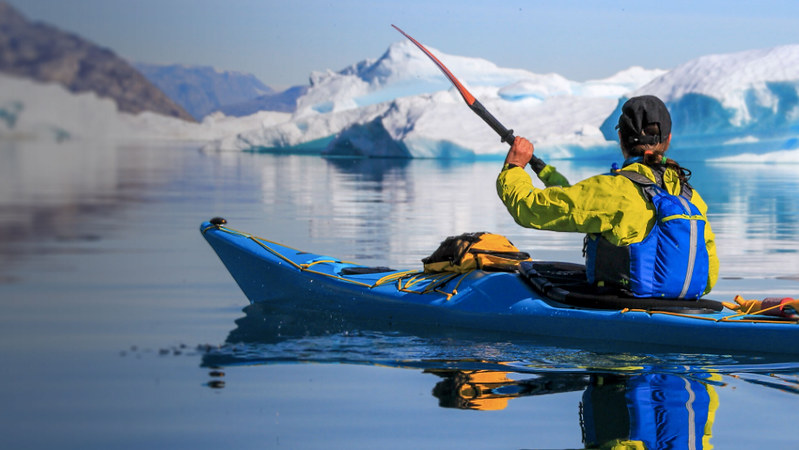Founded by Patrick and Harrison in 1968 and bought by Pyranha in 2003, P&H have been at the forefront of British sea kayaking design and manufacturing for many years. From revolutionary designs like the Delphin and Aries to modern day classics like the Virgo and Volan and the expedition successes of the Scorpio and Cetus. Whether you are looking for a sea kayak for ocean play, day tripping, multi-day expeditions, or one that has multiple uses, P&H Kayaks has a model for you. Read on for our full guide to all the current P&H sea kayak designs.
Virgo
Virgo LV
Length 429cm (14’0”) Width 56cm (22”) | Avg Paddler ≈ 167cm (5’5”) 63kg (139lb)
Virgo MV
Length 443cm (14’5”) Width 59cm (23”) | Avg Paddler ≈ 175cm (5’9”) 80kg (175lb)
Virgo HV
Length 457cm (15’0”) Width 62cm (24.5”) | Avg Paddler ≈ 190cm (6’2”), 95kg (210lb)

The Virgo's are a trio of compact polyethylene sea kayaks for day trips, weekend camping and some ocean play. They are one of the best choices of sea kayaks for beginners, and will suit many beyond that. Their short length make them suitable for short to medium journeys whilst making them very manoeuvrable. This manoeuvrability is a double edged sword though as they will wander off course a little, but then be easy to correct. The Virgo's moderately steep bow and stern give it a bit more waterline length and therefore a higher hull speed than it's short length would otherwise suggest. It can cause it to bury somewhat in steeper waves though. All three models can comfortable maintain an average groups paddling speed, but it takes a hard push to make them go much faster. On the hull, the V shaped bow softens to an almost flat mid section with hard chines, which combined with the relatively large width gives great stability and helps release the bow and stern when edging to turn. Although they are short boats they certainly aren't short on features, carrying all the usual P&H sea kayak fixtures and fittings including a fore deck mini hatch, paddle park, aluminium security point and recesses in the bow for spare paddles. They are only maybe slightly short of fore deck bungees, depending on your requirements, and a day hatch in the LV and MV versions. This lack of day hatch though does give them extra storage space without the corresponding foam bulkhead. They do tend to weathercock somewhat but there is plenty of room to move the excellently adjustable Connect seat to combat this once you Understand the Physics of Sea Kayaking in the Wind.
Composite Virgo
Length 459cm (15’0”) Width 58cm (23”) | Avg Paddler ≈ 175cm (5’9”) 80kg (175lb)

The Composite Virgo has much the same design and characteristics as the polyethylene versions. Size wise it has the length of the poly HV and the width of the poly MV, but it is a touch faster than both. The faster speed isn't just from the longer length but also the reduced rocker. These two features do reduce its manoeuvrability slightly, but that's when compared to the very agile polyethylene versions. Again the trade off is a bow that will dive easier when surfing steeper waves but again the volume in the bow helps it resurface. These design features do complement its construction though, as being composite you are more likely to be out a bit further from the rocks and covering a bit more distance. However at 15 foot this boat will never be as much of a mile munching speed machine as an agile acrobat. On edge it turns as well as its 15 foot length suggests. It can come in a myriad of customisable options including a lighter weight Performance seat and an ultralight layup that can get its weight down to a staggering 16.5kg.
For more info see this Video: An Overview of the P&H Composite Virgo
Delphin II 155
Length 475cm (15’7”) Width 57cm (22.5”) | Avg Paddler ≈ 185cm (6’0”) 90kg (200lb)

Designed primarily for ocean play, when it first came out the Delphin was a maverick, breaking the mould of a traditional sea kayak. The design combines the steep high volume bow and vertical stern of a racing sea kayak with the wide flat hull of a white water kayak. This gives it the agility and stability to be thrown around in the rough stuff and just enough speed to keep up with the pack. It's high rockered bow just kisses the water when held flat but put on edge, onto its hard chines, the bow lifts clear to release and turn sharply. Speaking of the bow, the forward hull has a quite pronounced bi concave section, which gives it a bit more of a keel to help with tracking and reduce weather cocking. Inside, the seating position also nods towards the higher knee position of a racing kayak but with the positively grippy outfitting of a white water boat. The Mark II versions include the re-located skeg slider as well as a re-profiled area around the front of the cockpit for greater comfort and connectivity. The addition of a day hatch is welcome even though the extra foam bulkhead does reduce the overall storage space. They do weathercock somewhat but this can be corrected by trim once you Understand the Physics of Sea Kayaking in the Wind.
Aries
Aries 150
Length 466cm (15’3”) Width 56cm (22.0”) | Avg Paddler ≈ 173cm (5’8”) 75kg (165lb)
Aries 155
Length 485cm (15’10”) Width 57cm (22.5”) | Avg Paddler ≈ 185cm (6’0”) 90kg (200lb)

The Aries are a couple of composite versions of the original two Delphin's, and come out fairly similar. The most notable difference is perhaps the composite 155 coming out 10cm's longer than the respective poly version. Both the chines and the bi-concave bow are softer and less pronounced on the composites too. As a boat, they are capable of keeping up with a group but they really want to stop and play; in the surf, tide races and amongst the rocks, and they do this really well. The lighter weight of the composite layups really help with the accelerations that are useful in this environment. Because of the thinner composite bulkheads they have the storage space for camping trips but really they are primarily ocean play boats.
Leo
Leo MV
Length 487cm (15’11”) Width 56cm (22.0”) | Avg Paddler ≈ 175cm (5’9”) 80kg (175lb)
Leo HV
Length 489cm (16’0”) Width 59cm (23.0”) | Avg Paddler ≈ 185cm (6’0”) 90kg (200lb)

The Leo's are P&H's duo of 'do it all' day/weekend polyethylene sea kayaks. At around 16 foot they fill the gap between the Virgo's and the Scorpio's. They are designed as a pair of boats however there are some slight differences. Mainly the MV has a slightly more pronounced rocker than the HV. This leads to slightly different performance's between the two boats. The MV, because of the higher rocker, is quite maneuverable even when not cranked over on edge. Because of this maneuverability it will wander off course occasionally but is easy to correct when it does. This suits the smaller framed paddler that this boat is designed for and also adds to its ocean play credentials. The HV, with less rocker, does benefit from edging when manoeuvring and carries more speed and directional stability. This helps it cover distance and makes it a bit more expedition capable. In both models the edges are softer than the Virgo's but harder than the Scorpio's. However the overall width of the boats, and therefore the stability, is a touch less than either of these, in both sizes. The wide foam bulkheads do take up some of the storage space but there is plenty for an overnight trip, or even a week if you pack light.
Volan
Volan 158
Length 479cm (15’9”) Width 55cm (21.7”) | Avg Paddler ≈ 173cm (5’8”) 75kg (165lb)
Volan 160
Length 489cm (16’0”) Width 58cm (23.0”) | Avg Paddler ≈ 180cm (5’10”) 85kg (185lb)

The Volan's are P&H's 'do it all' composite sea kayaks for day trips, weekend camping and a bit of ocean play thrown in too. Although they fill a similar niche to the Leo they aren't the same boat, taking their design influences from the Airies and the Cetus and they really do sit in between these two in most aspects. They have less rocker than the Aries but more than the Cetus. A steeper bow and stern than the Cetus but shallower than the Aries. Softer chines than the Aries, harder than the Cetus. Less V'd hull than the the Cetus but not as flat as the Aries. These compromises make it an interesting choice for someone that would love to have both the Aries and the Cetus as a two boat quiver but can't. Having said that they really aren't like either of those two boats, as they are both quite extreme and very different to each other. The Volan really is more of a modern classic. Also with a rumour of two more models on their way, a 156 and a 162, watch this space for more news.
Scorpio
Scorpio II LV
Length 508cm (16’8”) Width 53cm (21.0”) | Avg Paddler ≈ 175cm (5’9”) 80kg (175lb)
Scorpio II MV
Length 525cm (17’3”) Width 58cm (23.0”) | Avg Paddler ≈ 180cm (5’10”) 85kg (185lb)
Scorpio II HV
Length 535cm (17’7”) Width 61cm (24.0”) | Avg Paddler ≈ 195cm (6’4”) 100kg (220lb)

The Scorpio II's are a series of 3 polyethylene expedition sea kayaks, that can also be used as day boats. The Mark II version isn't just the addition of the Mark II skeg but is a fairly substantial re work of the original Scorpio. They lowered the back deck to help with rolling and most notably significantly increased the width in the MV and HV. Most of this width is behind the centre of the boat which improves maneuverability on edge and helps to achieve an efficient vertical paddling style. The boat has far softer chines than any other P&H boat (with the exception of the Cetus) and a shallow V hull. This makes it very easy to edge the boat to steer and because of the width they are very stable when on edge, particularly the larger models. They are outfitted with all the trimming's of an expedition boat, including sailing attachments. Their slight drawback being the loss of storage space due to the thick foam bulkheads required in polyethylene boats.
Cetus
Cetus LV
Length 531cm (17’5”) Width 53cm (21.0”) | Avg Paddler ≈ 170cm (5’6”) 70kg (155lb)
Cetus MV
Length 541cm (17’9”) Width 54.5cm (21.5”) | Avg Paddler ≈ 180cm (5’10”) 85kg (185lb)
Cetus HV
Length 557cm (18’3”) Width 57cm (22.5”) | Avg Paddler ≈ 195cm (6’4”) 100kg (220lb)

The Cetus are P&H's series of three composite Expedition sea kayaks. The Cetus' models are all a little longer and mostly a fair bit narrower than their respective Scorpio's (the exception being the LV's which are similar width's). It's the Scorpio's that are wide though, the Cetus's being a standard width for an expedition sea kayak. They share a similar hull profile to the Scorpio's with a shallow angled and slender bow transitioning to a slight ‘V’ with very rounded chines. The widest point is behind the middle of the boat, which increases the manoeuvrability when edging, as well as making the boat narrower in front of the cockpit, where the paddle is mainly used. This helps with efficient forward paddling, a nice aspect to an expedition boat. The fixtures and fittings are of the high standard we expect from P&H.
Valkerie
Length 540cm (17’8”) Width 54cm (21.0”) | Avg Paddler ≈ 175cm (5’9”) 80kg (175lb)

The Valkerie is P&H's polyethylene fast sea kayak or FSK and is a first in this material. It's rocker profile is like that of a surf ski with very little in the bow but more in the stern. This helps lift the stern to catch small waves to surf down wind. It has a very steep bow angle and vertical stern, to maximise its waterline length relative to its overall length which is just 4 inches short of 18 foot. The bow and stern volume is low for this style of kayak making for a wave piercing bow that pierces through small chop but makes for a bit of a wet ride. The mid section of the hull is gently rounded into moderately hard chines. The widest point of the hull is behind the centre helping the manoeuvrability when on edge and the paddle efficiency. The deck cutaways along the cockpit also allow for a more vertical paddle stroke and put the knees into a more straight legged, forward paddling efficient, position. The Connect 30 seat and fittings, including a ratchet backrest are unusual in this style of boat but give a firm fit, at the cost of a little torso rotation. It has all the usual P&H fixtures and fittings but storage isn't quite as much as usual for this style of boat due to the foam bulkheads and low volume bow and stern.
Explaining the numbers
When it comes to the dimensions of the boat things are fairly clear cut. However when it comes to the dimensions of the paddler things are a lot more ambiguous. Rather than giving a range we have given an approximate ideal paddler size. Lots of factors can affect this though, foot size, or rather footwear size being a good example.
When it comes to weight things get even more difficult. Sea kayaks are obviously designed to carry additional weight, particularly expedition models. However paddler weight makes the boat more unstable and it is this that we are primarily looking at when we suggest an average paddler weight. If you are ok with the reduced stability you can significantly increase this number. And like wise if you are looking for increased stability a larger boat will work as long as you are ok with how the boat fits around you.
It almost goes without saying that you will only really know if you try the boat, preferably in wind and waves.

By Philip Clegg
With over two decades of working in the sea kayaking industry, Phil can be found on a daily basis coaching on and around Anglesey. That's when he's not expeditioning, playing in tide races or putting kit to the test.



